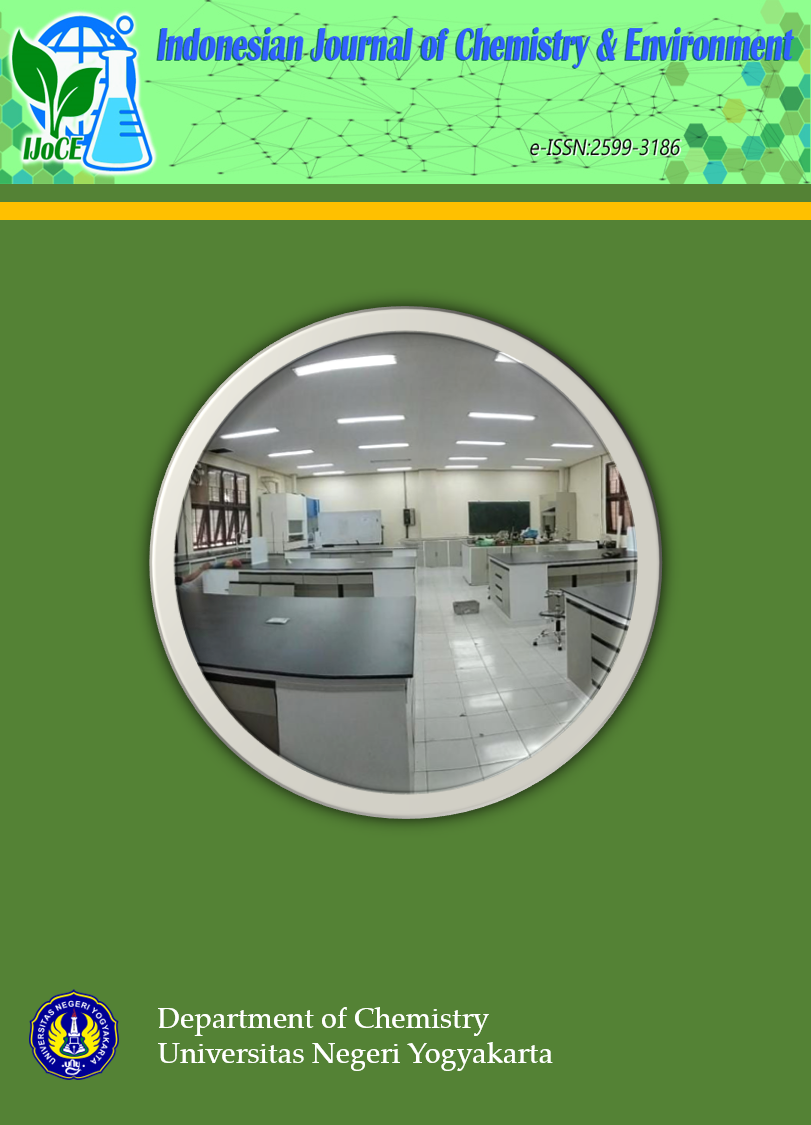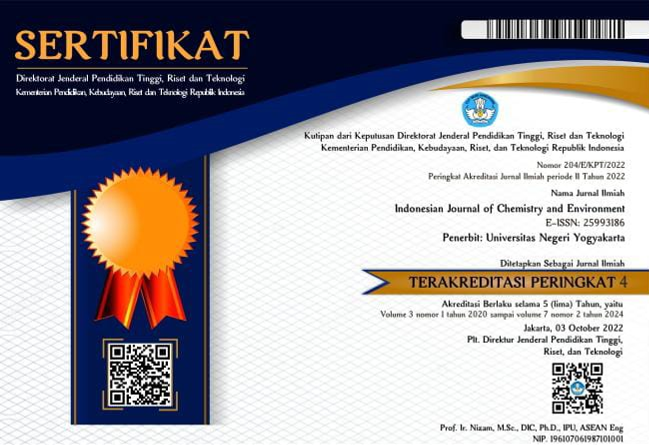Analysis of Iodine Level (KIO3) based on the Formation of Amylum-Iodine Complex using UV-Vis Spectroscopy
DOI:
https://doi.org/10.21831/ijce.v2i2.38189Abstract
Iodine is an important component that needed by the body in the synthesis of thyroid hormones in order to maximize humans' growth and development. Besides, iodine also plays a role in the regulation and metabolism system in the human body. Iodine Deficiency Disorders (IDD) is one of the nutritional problems which is an inhibiting factor in the development of human resources because it can cause disruption of mental development and human intelligence. Iodine in food is found from table salt, it found in the form of KIO3 with a standard level of iodine in table salt that is 30ppm-80ppm. This research aims to determine the iodine levels in the four kinds of table salt using spectrophotometric methods based on the formation of the starch iodine complex. The formation of the starch iodine complex performed by reacting I- with the oxidizer IO3- in an acidic atmosphere with starch indicator. The resulting blue color was analysed by visible spectrophotometry and produce absorbance data. The measured iodine content is equal to samples A, B, C, and D showing results less than 30 ppm so it can be concluded that iodine in table salt still does not meet the SNI standards that should be around 30ppm-80ppm
Downloads
Published
2021-01-24
How to Cite
[1]
Krisdiyanti, A. et al. 2021. Analysis of Iodine Level (KIO3) based on the Formation of Amylum-Iodine Complex using UV-Vis Spectroscopy. Indonesian Journal of Chemistry and Environment. 2, 2 (Jan. 2021), 7–14. DOI:https://doi.org/10.21831/ijce.v2i2.38189.
Issue
Section
Articles
Citation Check
License
Authors who publish with this journal agree to the following terms:
- Authors retain copyright under a Creative Commons Attribution–ShareAlike License (CC BY SA) that allows others to share: copy, and redistribute the material in any medium or format, Adapt: remix, transform, and build upon the material, for any purpose, even commercially.
- Authors are able to enter into separate, additional contractual arrangements for the non-exclusive distribution of the journal's published version of the work (e.g., post it to an institutional repository or publish it in a book), with an acknowledgement of its initial publication in this journal.
- Authors are permitted and encouraged to post their work online (e.g., in institutional repositories or on their website) prior to and during the submission process, as it can lead to productive exchanges, as well as earlier and greater citation of published work.










